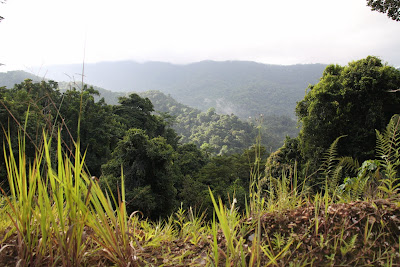Here is an amazing opportunity, perhaps the chance of a lifetime: you could come to Ithaca and work with me! And a bunch of other people who love birds, of course. Good luck if you apply!
The Cornell Lab of Ornithology is seeking a programmer/analyst to work as part of a terrestrial acoustic monitoring initiative to monitor the flight-calls of nocturnally migrating birds. This position had a primary emphasis on creating user interfaces for automated detection, classification, and visualization systems. We are seeking someone with a passion for studying bird migration and flight calls, someone who is excited about developing cutting edge tools that will be a cornerstone of the next generation, state of the art acoustic monitoring of migrant birds.
This position is available in the Bioacoustics Research Program - it has been posted on the Jobs at Cornell on-line posting and application system at
http://www.ohr.cornell.edu/jobs/ - if you know of anyone that might be interested in this position, please have them apply.
BARN Software Developer
Programmer Analyst II - Band E
2 positions available
Description:
· Contribute to the development and maintenance of web-based sound analysis software tools and support ongoing and future research in the field of animal bioacoustics at the Bioacoustics Research Program at the Cornell Lab of Ornithology. Current scientific research projects supported by our software involve the study of communication systems and behavior in whales, elephants, migrating birds, endangered birds, and other birds.
· Under guidance of project lead, perform tasks to help move forward the overall set of tools provided by the group through the BARN project, http://barn.xbat.org. The BARN project develops tools to support the creation of networked annotated sound libraries. Our web-based tools allow users to maintain and richly annotate sound collections in support of their research.
· Collaborate with local and remote end users to answer questions, investigate and recreate problems, and recommend resolutions.
· Meet with team to discuss solutions, take advice from lead regarding the implementation of solutions.
· Implement data conversion utilities, user interface features, and other software features designed by self or others to fit into established architecture.
· Develop features to facilitate the acquisition, curation, scanning, review, and reporting of acoustic data and metadata to support the field of bioacoustics research.
· Tasks may include but are not limited to file upload methods; metadata manipulation and storage; web browser-based user-initiated scan, review, and reporting; integration of signal processing components into a workflow; and development of tagging and filtering schemes.
· Develop software using a variety of technologies (Ruby, Javascript, RDBMS, MATLAB, LAMP, others as needed) to stretch the possibilities of the system for the research community.
· Collaborate within a team environment to provide documentation to developers and end users for the best ways to use the software.
· Provide consultation and training to staff, faculty, students, and visiting research colleagues to use the innovative technologies available.
Required Qualifications:
· Bachelor's degree with three to four years relevant experience or equivalent combination.
· Experience maintaining source code using version control.
· Experience with software design and development using two or more of the following technologies: Ruby (various frameworks and tools: Rails, RSpec, Sinatra, Capistrano, gems), Javascript (jQuery, JSON, Processing.js), RDBMS (SQL, MySQL, SQLite, JDBC), MATLAB (signal, image processing, data-visualization), LAMP maintenance and administration.
· Proven ability to learn new programming languages quickly.
· Experience with web-design for data-driven and/or multi-media applications.
· Must be able to communicate technical language clearly in layman's terms.
· Demonstrable skills in problem solving, critical thinking, and clear written and oral communication.
· Ability to work well with a diverse group in a professional and respectful work environment.
Preferred Qualifications:
· Master's degree desired in computer science, computer engineering, or related field preferred.
· Coursework in statistics, machine-learning, data-mining or database systems.
· Experience applying and developing data-mining strategies and systems; knowledge of analytical and statistical tools, as well as general tools for graphing and figure drawing.
· Experience performing independent literature searches and scientific research.
· Experience writing software in Python, Java, and/or PHP.
· Experience working on software projects outside a classroom environment.
· Knowledge of and experience using XML.
-





